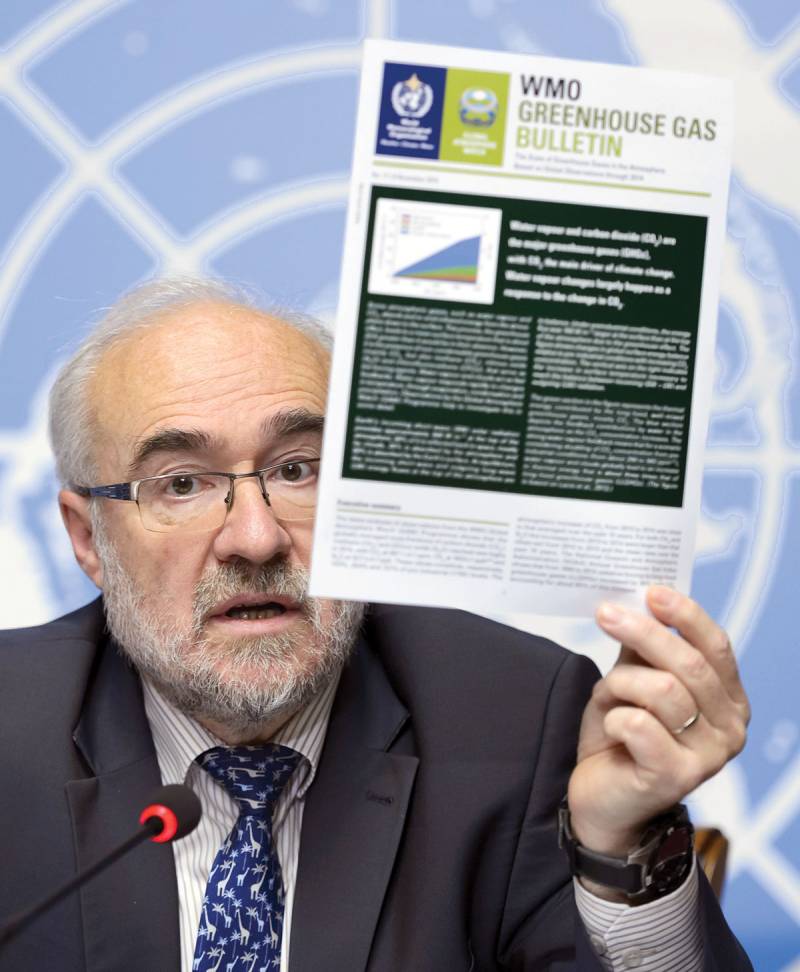WASHINGTON - Without rapid, inclusive and climate-smart development, together with emissions-reductions efforts that protect the poor, there could be more than 100 million additional people in poverty by 2030.
As many as 62 million more people in South Asia - 45 million of them in India alone -could fall into extreme poverty by 2030, largely as a result of lower crop yields and higher food prices, and the health impacts of climate change.
This was revealed by a new World Bank report released just weeks ahead of a major United Nations climate conference in Paris.
The report, 'Shock Waves: Managing the Impacts of Climate Change on Poverty', finds that poor people are already at high risk from climate-related shocks, including crop failures from reduced rainfall, spikes in food prices after extreme weather events, and increased incidence of diseases after heat waves and floods. It says such shocks could wipe out hard-won gains, leading to irreversible losses, driving people back into poverty, particularly in South Asia and Africa.
“This report sends a clear message that ending poverty will not be possible unless we take strong action to reduce the threat of climate change on poor people and dramatically reduce harmful emissions,” World Bank Group President Jim Yong Kim said today in a statement.
“Climate change hits the poorest the hardest, and our challenge now is to protect tens of millions of people from falling into extreme poverty because of a changing climate,” the World Bank chief explains.
Efforts to end poverty, the linchpin of the 17 new Sustainable Development Goals (SDGs) adopted by the United Nations in September, could be derailed if the impacts of climate change on poor and vulnerable people and communities not effectively addressed.
According to the report, the poorest people are more exposed than the average population to climate- related shocks such as floods, droughts, and heatwaves, and they lose much more of their wealth when they are hit.
In the 52 countries where data was available, 85 per cent of the population lives in countries where poor people are more exposed to drought than the average. Poor people are also more exposed to higher temperatures and live in countries where food production is expected to decrease because of climate change.
Released less than a month before negotiators gather in Paris for the 21st Conference of the Parties to the UN Framework Convention on Climate Change (UNFCCC), known as COP 21, the report shows how ending poverty and fighting climate change can be more effectively achieved if addressed together.
Agriculture will be the main driver of any increase in poverty, the report finds. Modeling studies suggest that climate change could result in global crop yield losses as large as 5 percent by 2030 and 30 per cent by 2080. Health effects – higher incidence of malaria, diarrhea and stunting – and the labor productivity effects of high temperatures are the next-strongest drivers.
The impact of climate change on food prices in Africa could be as high as 12 per cent in 2030 and 70 percent by 2080 – a crippling blow to those nations where food consumption of the poorest households amounts to over 60 per cent of total spending.
In focusing on impacts through agriculture, natural disasters and health, the report calls for development efforts that improve the resilience of poor people, such as strengthening social safety nets and universal health coverage, along with climate-specific measures to help cope with a changing climate, such as upgraded flood defenses, early warning systems and climate-resistant crops.
At the same time, the report says an all-out push to reduce greenhouse gas emissions is needed to remove the long-term threat that climate change poses for poverty reduction. Such mitigation efforts should be designed to ensure that they do not burden the poor. For example, the savings from eliminating fossil fuel subsidies could be reinvested in assistance schemes to help poor families cope with higher fuel costs.
In poor countries, support from the international community will be essential to accomplish many of these measures, according to the report. This is particularly true for investments with high upfront costs – such as urban transport or resilient energy infrastructure – that are critical to prevent lock-ins into carbon-intensive patterns.
“The future is not set in stone,” said Stephane Hallegatte, a senior economist at the World Bank who led the team that prepared the report. “We have a window of opportunity to achieve our poverty objectives in the face of climate change, provided we make wise policy choices now.”
The report also reviews successful policy solutions to show that good development can protect the poor from shocks. For example, after Typhoon Yolanda, the Philippines was able to use the existing conditional cash transfer system to quickly distribute emergency funding to the affected population. In Uganda, the combination of new crop varieties and extension visits has boosted household agricultural income by 16 per cent.
Saturday, April 20, 2024
World may be burdened by another 100 million poor by 2030
| WB report warns 62 million in South Asia could fall into extreme poverty because of climate change

12:54 PM | April 20, 2024
PTI founder undergoes medical checkup at Adiala Jail
8:26 PM | April 20, 2024
Govt approves army deployment for security during by-polls
3:05 PM | April 20, 2024
Pakistan spends one billion US$ on wheat import this year
2:53 PM | April 20, 2024
Heavy rains claim 98 lives, 89 injuries, across Pakistan: NDMA
1:21 PM | April 20, 2024
Watercourse project to help increase crop yields in Punjab
12:57 PM | April 20, 2024
Policitising Tragedy
April 20, 2024
Tehran to Rafah
April 20, 2024
A New Leaf
April 20, 2024
A Tense Neighbourhood
April 19, 2024
Dubai Underwater
April 19, 2024
Dangers of Deepfakes
April 20, 2024
Feudalism
April 20, 2024
Kite tragedy
April 19, 2024
Discipline dilemma
April 19, 2024
Urgent plea
April 19, 2024
ePaper - Nawaiwaqt
Advertisement
Nawaiwaqt Group | Copyright © 2024





